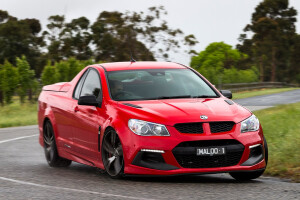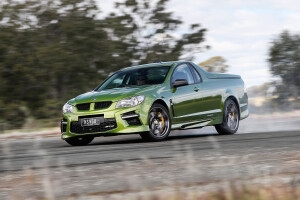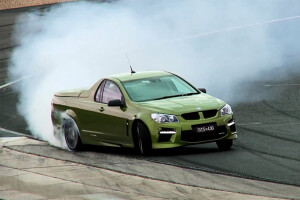Latest Review
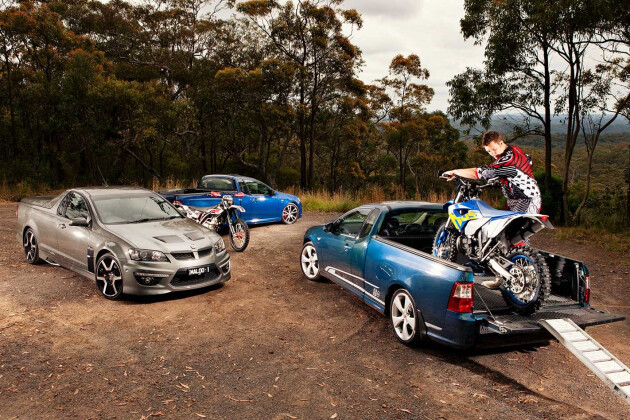
2011 HSV Maloo R8 vs FPV F6 vs FPV GS ute comparison review: classic MOTOR
Forget SUVs, our good 'ol sports utes are the ultimate crossover vehicles
The marketing gurus for Mars bars make a pretty bold promise that the world’s favourite chocolate helps you work, rest and play.
This feature was originally published in MOTOR’s January 2011 issue
Sure, its sugar content will give you a big enough glucose-induced shot of energy to stay awake through a boardroom meeting (that’s the work bit) or kick a footy around the park for five minutes (play), and its calorie-loaded fat content will have you beached on the couch (resting) after you come down.
 It’s a clever piece of spin to convince the masses that a Mars Bar is actually good for you. But nothing fits the “work, rest and play” promise better than the humble ‘ol Aussie ute; especially when you take the top shelf stuff from HSV and FPV.
It’s a clever piece of spin to convince the masses that a Mars Bar is actually good for you. But nothing fits the “work, rest and play” promise better than the humble ‘ol Aussie ute; especially when you take the top shelf stuff from HSV and FPV.
Yep, they've had the work bit covered ever since Lou Bandt slapped a tray on the back of a Ford coupe back in the mid 1930s as the four-wheeled tool of choice for farmers and tradies alike. If you've ever been involved in the aftermath of a B&S ball, you'll know there are worse places to rest than tucked up in a swag in the back of a ute. And with all three homegrown performance utes sending at least 310kW to the treads, you're never far from playtime. But right now, HSV and FPV have plenty to play for.
Clayton's cargo-hauling Maloo R8 has ruled the roost since it was introduced 20 years ago, morphing from its humble beginnings as a tarted-up hay hauler to become a quasi two-door sports car – and one of HSV's top-selling models.
As part of its never-ending 20th birthday celebrations, HSV has slapped together a limited-edition anniversary special that adds the GTS’s 20-inch alloys and leather along with unique Batman-style hood scoops and matching side vents to make it special, and dropped the must-have bi-modal exhaust and Side Blind Zone Alert system into the bundle. At $67,900 – a $3000 more ask than the standard Maloo R8 – the 20 Years of Maloo ain’t cheap for a ute, but according to HSV, it represents around $9K worth of extra goodies.
On the other side of the fence, FPV has overhauled its V8-powered ute philosophy in line with the updated FG sedan range. Gone are the GT-based Pursuit and GT-P Super Pursuit, replaced with a single entry-level GS powered by the low-blow, 315kW version of the all-new Miami 5.0-litre supercharged V8. At just $51,990, it kickstarts FPV's family with some serious bang for your buck.
But, while this could've been a simple two-car V8 shootout, FPV has a joker in the pack with its turbocharged 4.0-litre F6 ute, so it's here too – even though its been largely untouched since the FG was launched in mid 2008.
Although it packs the least grunt of the three at 310kW, its $58,990 base price tag places it slap-bang between the GS and the Maloo and, with the full FPV visual treatment rather than the GS's stickered-up XR body kit, totally warrants its position as a more-than-competent alternative to the traditional bent-eight rivals.
Actually, when you look at the numbers there's bugger-all between the three even though they go about it in completely different ways. The Maloo's all-alloy 6.2-litre LS3 V8 has been nestled neatly in the front of every hot Holden since April 2008 and, surprisingly for HSV which hasn't missed an opportunity to slap a bigger badge on the boot for over 15 years, it has been left virtually untouched since. But that ain't such a bad thing, as the Maloo maintains its place at the top of the dick-swinging ranks with 317kW peddled out at 6000rpm and 550Nm of twist coming in at a relatively high 4800rpm.
On paper, the GS's 315kW and 545Nm are within a bee's naughty bits of the Maloo's power and torque claims, but there's a big difference in where the two produce thier grunt within the rev range.
Where the LS3 relies on its big cubes and ability to rev out to 6600rpm, the valley-mounted Eaton/Harrop supercharger forces gobfuls of air down the 5.0-litre's gullet to deliver maximum torque in a flat line from just 2000 up to 5500rpm, while peak power is produced at 5750rpm, just 500 revs short of its electronically-controlled cut-out.
It's a similar state of affairs for the F6 too. Even though it only generates 310kW at 5500rpm from its intercooled/turbocharged in-line six, it outmusters both the V8s in terms of torque with 565 of Newton's best on tap from 1950-5200rpm.
And, when push comes to shove down the strip, that makes a difference. With masses of grip on offer after a Top Fuel meeting on the weekend, Sydney Dragway is at it best and a perfectly crisp and cool spring morning has the F6 chomping for V8 blood.
With the sweet-as-honey ZF six-speed auto shifted into performance mode and the turbo six stalled up to just 1200rpm, the F6 takes its time to initially overcome its 1814kg mass, launching slower to 30km/h than both the Maloo and GS.
But when the Garrett GT3540 snail is full of boost, its mega top-end grunt just never feels like quitting and it bolts to triple figures in a cracking 4.92sec to trip the 400m marker in 13.09sec at 178.06km/h. Yep, you read it right; a sub five-second ute – and, apart from HSV's limited-build 7.0-litre W427, it's our fastest-ever run in an Aussie production car!
While the numbers suggest the F6 should be more of a handful than the GS (with greater torque available on tap earlier), it's not actually the case. Sure, the F6 comes on boost hard and fast and, with traction control turned off, can easily wheelspin its way through third gear, but the GS's power delivery is actually harder to tame.
Even though its only blowing 0.34bar into the 90-degree V8, it comes on so strong and fat that it needs to be gently walked off the line otherwise it sits there axle tramping in a cloud of smoke. Still, it pulls a string of consistent low fives with a best of 5.01sec to 100km/h and 13.19sec at 175.63km/h.
While the FPVs have an indicated 6250 redline, the auto software pulls them up short and spoils the party by shifting at 6000rpm. Unlike most modern turbo engines that seem instantly breathless once they've passed peak power, the F6 feels as though it could easily handle another 500rpm, whereas the GS feels just right.
Surprisingly, it doesn't feel as strong as the F6 in the top end, which is clearly evident when you look at the big numbers (the GS is 0.5sec down at 160km/h and 0.8sec off at 190km/h).
The Maloo, on the other hand, loves big revs. While both the FPVs run the same ZF automatic gearbox, our test Maloo is fitted with the Tremec TR6060 six-speed manual; not only because it's the better gearbox and utilises all of the LS3's top end, but because it features launch control within the three-stage ESP system.
However, Sydney Dragway's sticky startline is sending the computer into a meltdown as it tries to unleash the Maloo from a clutch-dump at maximum torque. Instead, it grapples with the traction control system and results in an axle-tramping getaway that is aborted when it can only muster a flat six to triple figures.
Ditch the electronics for a full human-activated launch (at a far less stressful 2200rpm) and the HSV gets out of the hole quicker than the FPVs – beating them both to 30km/h – but, even though it produces more power and maxes out at 6600rpm, it can't topple them to triple figures (5.43sec) nor across the 400m (13.62sec/172.26km/h).
Now that's a big turnaround in fortunes for the Ford-versus-Holden stoush as HSV has been belting FPV to a pulp for the last decade, and if you're a Ford fan then you might be satisfied enough to finish here and chalk up a double win. But it's not that simple.
Show both the F6 and GS a twisty bit of road and the score swings the other way. The Falcon's antiquated leaf-spring rear and cab-chassis construction are no match for the Maloo's more sophisticated multi-link rear and monocoque body.
Both the F6 and GS ride on identical suspension settings and are fitted with the same Dunlop SP Sport Max 245/35 ZR19 boots, which makes them handle and react in a similar manner. The GS's slightly heavier and wider engine makes it marginally slower on initial turn-in than the F6, the blown V8 tending to lean its front-end into a gentle understeer a little earlier when you push the thing hard.
But it's the back-end that constantly jiggles over little bumps – and feels like it leaps a metre sideways over big ones – that makes both cars feel nervous across country roads.
Luckily, both are fitted with LSDs and the ute's longer wheelbase makes them a little more progressive than their sedan siblings. However, you can't help but think these two have just a little too much power for their chassis, and that FPV should have budgeted some coin on stiffer front springs and wider rear rubber, particularly in the GS, just to balance things out a bit.
And that's where the Maloo king-hits them both in the gonads. Even though it sits on bigger (but only R-rated) 20-inch rubber, it rides much sweeter than either of the FPVs. Yeah, it's stiff enough to transfer big bumps through the body, but never to the point where the Maloo feels unsettled.
In fact, the wider front rubber (up 0.5-inch) makes the steering slightly sharper and even more balanced in the rear than a standard Maloo, to the point where, if you don't look over your shoulder, it doesn't feel like a ute at all.
It's only then that the Maloo's biggest issue becomes obvious; vision. Or more precisely, the bloody lack of it. Yep, it looks cool with the El Camino-like sail plane that extends the roofline into the hard tonneau cover, but it creates a whopping big blind spot. And you can almost forget about seeing anything through the rear vision mirror, too.
The tonneau already sits higher than the base line of the rear screen, but then its two 'speed humps' make it even worse. And the HSV braniac who thought of slapping a whopping great 20 Years of Maloo sticker bang in the middle (so you can't see anything at all) should be taken out the back for a good talking to!
Which makes the HSV's new-for-E3 Side Blind Zone Alert system, which features a pyramid clustered at the base of both A-pillars filled with LEDs that change from blue to red when it detects an object beside the Maloo, all the more useful – and damn critical, too.
It's just one part of a significant cabin upgrade for the Maloo that includes an HSV-exclusive instrument pod, classier dash trim and a revised centre console featuring Holden's touchscreen audio system with HSV's additional Enhanced Driver Interface – a race-style multi-function data logger developed in conjunction with Motec.
The result is a cabin that looks and feels richer, classier and sportier than before, and tops both the FPVs. All three feature the latest in connectivity, including in-built Bluetooth and iPod, but the Maloo comes standard with sat-nav (which is much easier to use than Ford's cumbersome remote-control unit, and also has pre-loaded speed camera warnings), as well as a reversing camera, which is a godsend.
It's leather-clad, well-bolstered seats are better too, and it has a much more comfortable and natural driving position than the FPVs. Like all Falcons, you can't drop the seats low enough nor raise the steering column high enough to prevent feeling like you're all out of proportion. But at least you can see out the back!
And in terms of practicality, the FPVs traditional soft-tonneau-covered trays at least allow you to cart around big boy's toys such as trailbikes. But, in the end, it's their ute-ness that compromises them.
If all you want is grunt, then the GS is probably the bargain of the century.
It's a hell of a lot of engine, but honestly not much more than that, because if you strip away its stickers it looks like a plain Jane XR8, right down to its alloys and weeny brakes. On the plus side though it's bloody cheap and bloody fast, and that will be bloody appealing.
While the F6 isn't any better in terms of ride and handling, at least it looks like an FPV with its racoon-eyed bumper, unique wheels and Brembo brakes. And that turbo six is an absolute corker!
But the Maloo does the whole sports ute thing in much more convincing fashion. It looks sportier on the outside, feels richer and more special from the inside, and is much better balanced and refined on the road. It just isn't as quick. Shhhh!!!
Fast Facts
| FPV F6 ute | FPV GS ute | HSV Maloo R8 | |
| Body | 2-door, 2-seat ute | ||
| Drive | rear-wheel | ||
| Engine | 3986cc in-line 6, DOHC, 24v, turbocharged | 4951cc V8, DOHC, 32v, supercharged | 6162cc V8, OHC, 16v |
| Bore x Stroke | 92.3 x 99.3mm | 92.2 x 92.7mm | 103.25 x 92.0mm |
| Compression | 8.4:1 | 9.25:1 | 10.7:1 |
| Power | 310kW @ 5500rpm | 315kW @ 5750rpm | 317kW @ 6000rpm |
| Torque | 565Nm @ 1950-5200rpm | 545Nm @ 2000-5500rpm | 550Nm @ 4600rpm |
| Weight (dry) | 1814kg | 1861kg | 1823kg |
| Power/Weight | 171kW/tonne | 169kW/tonne | 174kW/tonne |
| Transmission | 6-speed automatic | 6-speed manual | |
| Suspension (f) | double A-arms, coil springs, anti-roll bar | struts, A-arms, anti-roll bar | |
| Suspension (r) | live axle, leaf springs, anti-roll bar | multi-links, coil-springs, anti-roll bar | |
| L/W/h | 5096/1934/1453mm | 5121/1899/1465mm | |
| Wheelbase | 3014mm | 3009mm | |
| Tracks | 1583/1583mm (f/r) | 1592/1590mm (f/r) | |
| Steering | power rack and pinion | ||
| Brakes (f) | 355mm ventilated/drilled discs, six-piston calipers | 322mm ventilated discs, twin-piston calipers | 365mm ventilated discs, four-piston calipers |
| Brakes (r) | 328mm ventilated/drilled discs, single-piston calipers | 303mm ventilated discs, single-piston calipers | 350mm ventilated discs, four-piston calipers |
| Wheels | 19 x 8.0-inch (f/r) | 20 x 8.5-inch (f), 20 x 9.5-inch (r) | |
| Tyres | Dunlop SP Sport Maxx; 245/35 ZR19 93Y (f/r) | Bridgestone Potenza RE050A; 245/35 R20 96Y (f), 275/30 R 20 97Y (r) | |
| Price | $58,990 ($65,600 as tested) | $51,990 ($57,146 as tested) | $67,900 ($67,900 as tested) |
| Pros | Brilliant powertrain combo that's holy-shit quick | Fully-fat power delivery is addictive; an absolute bargain | Drives like a sedan, yet looks like a real sports ute; cabin |
| Cons | Jiggly rear-end lacks body control; poor ergonomics | Looks like a tarted-up XR8, needs wider rear rubber, now! | LS3 V8 has been outgunned in the straight-line department |
| Rating | 3.5 out of 5 stars | 3.5 out of 5 stars | 4 out of 5 stars |
The Strip
| FPV F6 ute | FPV GS ute | HSV Maloo R8 | |
| 0-10km/h | 0.45sec | 0.46sec | 0.30sec |
| 0-20km/h | 0.92sec | 0.78sec | 0.68sec |
| 0-30km/h | 1.38sec | 1.20sec | 1.30sec |
| 0-40km/h | 1.81sec | 1.64sec | 1.83sec |
| 0-50km/h | 2.17sec | 2.10sec | 2.30sec |
| 0-60km/h | 2.57sec | 2.56sec | 2.77sec |
| 0-70km/h | 3.11sec | 3.08sec | 3.31sec |
| 0-80km/h | 3.72sec | 3.69sec | 4.15sec |
| 0-90km/h | 4.32sec | 4.35sec | 4.74sec |
| 0-100km/h | 4.92sec | 5.01sec | 5.43sec |
| 0-110km/h | 5.58sec | 5.68sec | 6.59sec |
| 0-120km/h | 6.53sec | 6.61sec | 7.46sec |
| 0-130km/h | 7.47sec | 7.65sec | 8.38sec |
| 0-140km/h | 8.44sec | 8.73sec | 9.35sec |
| 0-150km/h | 9.45sec | 9.84sec | 10.46sec |
| 0-160km/h | 10.47sec | 10.95sec | 11.88sec |
| 0-170km/h | 11.69sec | 12.18sec | 13.30sec |
| 0-180km/h | 13.51sec | 13.99sec | 14.78sec |
| 0-190km/h | 15.42sec | 16.16sec | 16.39sec |
| 0-400m | 13.09sec @ 178.06km/h | 13.19sec @ 175.63km/h | 13.62sec @ 172.26km/h |
| 80-120km/h (Drive) | 2.9sec | 3.0sec | 3.4sec |
| 100-0km/h | 39.13m | 38.83m | 36.64m |
News
-
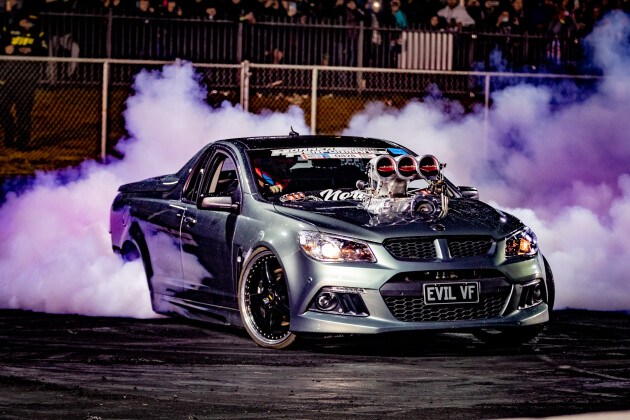 Features
FeaturesBlown and injected HSV Maloo - EVIL VF
Mum’s the word on this blown and injected tyre-slayer
-
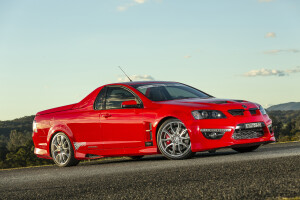 Features
FeaturesRear-mount turbo HSV E3 R8 Maloo
Kim Smith’s Drag Challenge-forged E3 Maloo is shooting for the nine-second zone
-
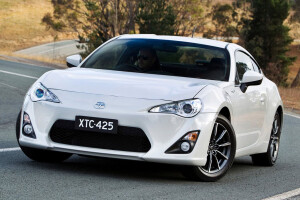 Features
FeaturesThe best performance cars under $15,000
These are the best picks for budget performance machines under $15,000, as judged by us
-
 Features
FeaturesKeith Urban used to nag HSV to build a one-off left-hook Maloo
Former HSV boss Chris Payne recalls the time he let Urban loose in a Maloo
-
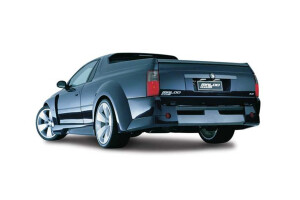
The story behind the HSV HRT Maloo concept, from HSV's ex-boss
-
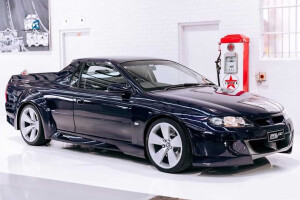
The one-off HRT Maloo concept ute built by HSV is up for sale
-
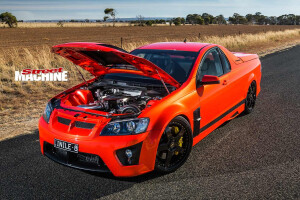
1500hp turbo LS-powered 2008 HSV VE Maloo R8
-
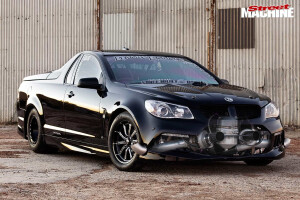
1700rwhp twin-turbo 2016 HSV ute







